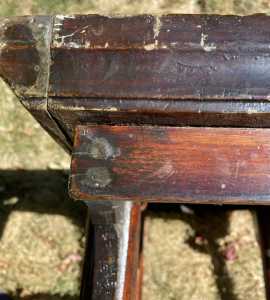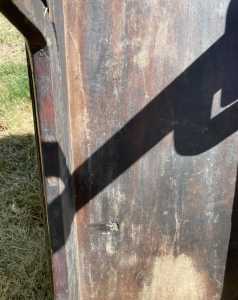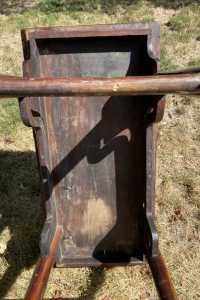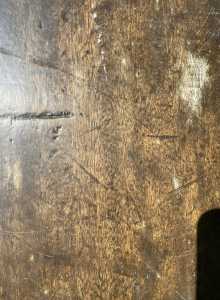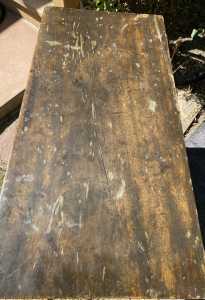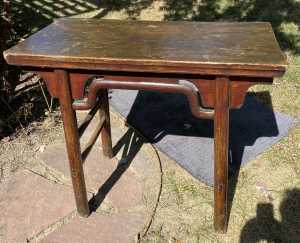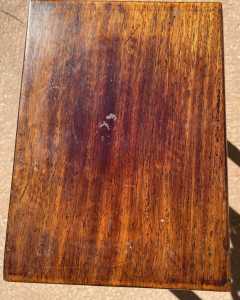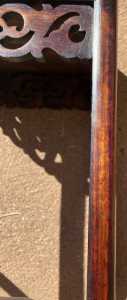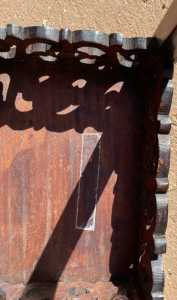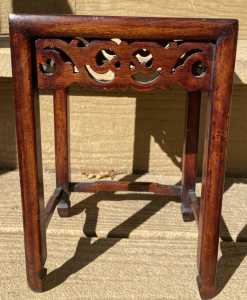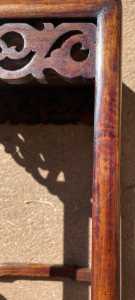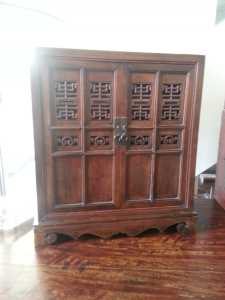The Chinese and Asian Art Forum. For Fans, Collectors and Dealers.
 Basic Rules For the BidAmount Asian Art Forum: Talk about whatever you want. You can even discuss and offer things that are for sale if they are authentic. Maximum image file size per post is 2 MB. Images of 700pxl x 700pxl are optimal if saved at a medium resolution. Be respectful of others and enjoy yourself. Click the YouTube link for a brief tutorial on using the forum. You can also EMBED Videos by cutting and pasting from You-Tube, Vimeo etc.
Basic Rules For the BidAmount Asian Art Forum: Talk about whatever you want. You can even discuss and offer things that are for sale if they are authentic. Maximum image file size per post is 2 MB. Images of 700pxl x 700pxl are optimal if saved at a medium resolution. Be respectful of others and enjoy yourself. Click the YouTube link for a brief tutorial on using the forum. You can also EMBED Videos by cutting and pasting from You-Tube, Vimeo etc.
NOTE: To post an item or add a new post, click open the category title from the FORUM LIST, and CLICK the Blue ADD TOPIC button.
The table looks 17-18th c Chinese in design, but there are aspects of the construction that do not look correct. There are two dark spots in the apron near the corner that look like screws - if original, definitely not Chinese. Also, the underside doesn’t show any cross supports - typical of mid-century copies of Chinese furniture.
Now, the top looks like a single plank, so perhaps cross supports weren’t needed.
If I were you, I’d get denatured alcohol or that citrus paint stripper, apply some to the inner part of one leg… maybe a 2”x2” area. Clean it to the original wood, then post pics.
Also, post pics of the feet while the table is upside down.
Based on the grain, I’m leaning towards the wood being teilimu - there is growing interest in teilimu.
@greeno107 thanks Tim there has been several repairs someone did a repair with some finishing nails. The round plugs are wood pins to joint the lags and the top. It’s had a hard life. It was $20 bucks at the thrift so I was going to strip and varnish it. I forgot to mention the top is very heavy and the legs seem much liter not as dense. So I believe it’s two different woods.
@lotusblack Certainly possible to be two woods… marriages between two different wood, two different periods made, two different types of tables… all are possible.
If that turns out to be the case, except in cases of rare wood like Zitan & Huanghuali, your table would have decorative value only .
Perform the leg test on the apron, too… let’s see what’s underneath.
@greeno107 Tim I have a question my understanding is if I found a Zitan table in a thrift store in the United States It can’t be sold if I can’t prove it was in the US before 2017. How does this get corrected so I can sell it?
@lotusblack Currently, the CITES restriction on the export of rosewood furniture that requires proof of import into the USA prior to 2018 DOES NOT include ZITAN - Zitan is not in the rosewood family. Hongmu and Huanghuali are in the rosewood family, and are subject to CITES restrictions for export.
Additionally, there is no law that prevents the large auction houses in NY from selling any if this furniture without provenance. The choice to require consignors to provide proof that a piece has been in the USA prior to 2018 is a legal precaution to avoid lawsuit from an overseas buyer who purchases a million dollar HH table, only to find out they can’t export it to China.
I’ve been advised recently that Heritage in Texas does not have such requirements for consignors, so you’ve got other venues to sell if you should be so lucky as to find an HH piece.
I have owned both Zitan and tielimu pieces.
I am 100% sure your table is not Zitan. The photo of the top is clear enough to see the very straight grain - tielimu has this grain, it’s very dense wood, and sometimes mistaken for Zitan. However, Chinese oak can look similar to teilimu, so nice I can see some better photos, I’ll try to confirm what you have.
@greeno107 thanks Tim the Zitan table I own is not this table shown I don’t believe this table to be Zitan. It’s another table I own.
@lotusblack Okay...good to know. It crossed my mind that I don't know the dimensions of the table you posted. Tables like this don't usually have a plank top like that, but a bench might. It also looks a bit rustic to be a table.
Not sure your plans for your zitan table, but I'm leaning very hard into selling my Chinese furniture as soon as possible with the exception of a few pieces I want to keep for myself.
Yes, the price of HH and other rare woods continue to grow, but since wood comes from a living organism, its export is regulated by CITES (Comittee (convention) of International Trade of Endangered Species). The rules restricting any trade of ivory and rhino horn in 2014 essentially destroyed the market value of these items (unless you're willing to trade in the blackmarket). The same could happen to tropical woods.
The current restrictions are loose enough that you can probably navigate them, but who knows if and when things could change.
I am a lifelong advocate of conservation, and having worked in the Amazon (ecotourism) and for a major accredited zoological park, I understand the importance of most of these regulations. However, retro-active punishment of the use of animal products for art such as banning the sale/trade, and spectacles such as mass burning of genuine antiques made from these products is pure idiocy.
@greeno107 Hey Tim what’s your opinion on this miniature stand. My book says the grain is consistent with HH is this rosewood and would then be excluded the dark patch on top is where the bowl was sitting for years.
@lotusblack it's rosewood... early 20th c. It is not a stand, but a nesting table. You see it is missing a spandrel (the cross supports near the bottom of the legs). The missing support allows the next size smaller table to fit underneath. Only the smallest in the group will have all 4 spandrels.
@lotusblack any updates? I found your exact table HERE and HERE. Both at Etsy of all places. They claim Elm wood & Ming style done in the 19th to early 20th C. I mean these two people could be incorrect so I would be interested to hear what more you've heard concerning this table from someone who's more versed on the topic. It's always very smart to first get a professional opinion (maybe 2) on a furniture piece before stripping it or doing any modifications as some pieces can look like complete crap but be so rare worth millions and if you mess with them the value is destroyed.
This is pretty common example of what's known as a wine table. The one you posted is poplar wood (杨木) which is common in Northeastern China. If you want to know what a wine table is, here is a whole video which traces the origins of this form of table from over a thousand years ago up until present day:
Yours is a very common use one and does not exactly conform to Chinese construction and joinery techniques, so that does lead me to question its age. Anyways regardless this was a very utilitarian piece thats seen a lot of action. I would doubt if its older than 20th century. I don't see you harming it by cleaning it as that patina is likely more dirt than patina. You can always wet sand it, if you like (see: https://www.antique-chinese-furniture.com/blog/2013/04/20/dirt-dirt-and-more-dirt-cleaning-a-late-ming-table-via-wet-sand-as-part-of-the-antique-restoration-process/ )
@greeno107 - screws or nails (when you see them) are often just poor restoration and repair in the countryside. Also definitely not Teilimu. That wood would never be used on a common piece like this. Also that's a southern wood, whereas this is a northern piece. And Tieli works diffrently from a woodworking perspective and does not wear/tear in the same way a softwood like poplar does. Also poplar is pretty recognizable to us in the industry as its one of the main woods in the north. Still using it for reproductions. Its relatively cheap. The surface in the attached photo is poplar (not the shrine). Legs could be elm... would need to see more photos.
@rschwendeman That wood would never be used on a common piece like this. Also that's a southern wood, whereas this is a northern piece.
Greetings!
I don't have your credentials, but I think the form of the table does not prohibit the use of tielimu as you've stated. Here's an example (without the apron) that sold at Christie's as a 19th c. bench (although I suspect it has cut legs and was an earlier period table).
Yes, the wear on the surface of John's table speaks of much softer wood than tielimu, but the grain seemed fairly strong compared to what most softwoods have - I recall suggesting it might also be oak.
Poplar? Here's poplar grain, next is John's table top grain, then tielimu (from Kurt Evarts' Chinese Classical Furniture website, then oak:
Anyway, I'm experienced, but certainly not an expert, and I almost never buy softwood pieces, so perhaps I just don't have enough hands on experience with these softwood pieces.
What I can say with certainty, and what I told John, was the the table was definately not Zitan. And, since at the time of this post I had just submitted two pieces to Christie's for their Fall 2022 sale, a zitan screen and a tielimu bench, I had felt that based upon the photos that tielimu could not be ruled out.
My tielimu bench didn't sell, but my zitan screen did okay.
https://onlineonly.christies.com/s/art-china-online/tielimu-bench-79/158763?ldp_breadcrumb=back
https://www.christies.com/lot/lot-6386388
Thanks for visiting "The BidAmount Asian Art Forum | Chinese Art"
If you sell on eBay, or have a shop feel free to post images and descriptions and links.
Check back often for discussion about the latest news in the Chinese art and antique world. Also find out about the latest Asian art auctions at Sotheby's, Christie's, Bonhams and Tajans.
Auction results for: fine porcelain, ceramics, bronze, jade, textiles and scholar's objects. As well as Japanese, Thai, Vietnamese and other Asian cultures.
Thank you,
Peter Combs
Topics and categories on The BidAmount Asian Art Forum | Chinese Art
Kangxi vases, Kangxi dishes and chargers, Kangxi ritual pieces, Kangxi scholar's objects, Qianlong famille rose, Qianlong enamels, Qianlong period paintings, Qianlong Emporer's court, Fine porcelain of the Yongzheng period. Chinese imperial art, Ming porcelain including Jiajing, Wanli, Xuande, Chenghua as well as Ming jades and bronzes.
The BidAmount Asian Art Forum | Chinese Art
A free Asian art discussion board and Asian art message board for dealers and collectors of art and antiques from China, Japan, Korea, Thailand, Cambodia, Vietnam and the rest of Asia. Linked to all of the BidAmount Asian art reference areas, with videos from plcombs Asian Art and Bidamount on YouTube. Sign up also for the weekly BidAmount newsletter and catalogs of active eBay listing of Chinese porcelain, bronze, jades, robes, and paintings.
The art of calligraphy - and for the ancient Chinese it certainly was an art - aimed to demonstrate superior control and skill using brush and ink. Calligraphy established itself as one of the major Chinese art forms during the Han dynasty (206 BCE - 220 CE), and for two millennia after, all educated men were expected to be proficient at it.
The Museum’s collections of Asian art span nearly five millennia and encompass the cultures of China, the Himalayas, India, Japan, Korea, and Southeast Asia. In 2007, the Museum launched an initiative to create dedicated galleries for the collection, beginning with a gallery for the arts of Korea ...
Chinese art is full of symbolism, in that artists typically seek to depict some aspect of a totality of which they are intuitively aware.
China Online Museum is the finest online museum of Chinese art. It features Chinese calligraphy, painting, ceramics, bronzes, carving, and other artworks.
Chinese Ceramics & Works of Art. Overview Upcoming auctions Contacts Auction results ... Christie’s sales of Chinese ceramics and works of art showcase centuries of Chinese history. Held throughout the year in London, New York, Paris and Hong Kong, they attract a wide audience of collectors and connoisseurs vying for pieces as diverse as ...
Explore Asian Art Week. Contact the Specialist Department. Chinese Paintings ... Senior Specialist, Head of Sale. [email protected]. Tel:+1 212 641 5760. Bid in-person or online for the upcoming auction:Fine Chinese Paintings on 10 September 2019 at New York. Bid in-person or online for the upcoming auction:Fine Chinese Paintings on 10 ...
Discover an abundance of must-see art from all corners of a vast continent at Christie’s NY Asian Art Week. From contemporary classical and Chinese paintings to works with exemplary provenance from the Art Institute of Chicago, our Rockefeller Paza galleries will be full of ancient treasures and contemporary masterworks in a salute to the vibrant arts of Asia.
Sold to benefit The Art Institute of Chicago’s Asian Art Acquisition Fund, the sale features 84 lots with a focus on Ming and Qing porcelains, and offers a rare insight into the taste for collecting Chinese ceramics and works of art in the Midwest from the end of the 19th century through the 1980s. Highlights include two Wanli wucai garlic-head vases, a Qianlong mark and period, blue and ...
Specialist, Chinese Paintings, Christie's London Dr Malcolm McNeill is a Specialist in Chinese Paintings at Christie’s, based in London. He previously worked as an assistant curator of the Chinese collections and the Victoria and Albert Museum in London, as a researcher at the British Museum, and as a translator and tour guide at the National Palace Museum in Taipei.
The Christie's Education 2020 Conference: The Chinese Art Market 18 Jun 2019 Christie’s Education is delighted to announce our first international academic conference in Asia which will take place in Hong Kong from 26-27 November 2020 at the Hong Kong Convention and Exhibition Centre and will run in parallel with Christie’s Hong Kong Autumn Auctions.
The summer Chinese Art sale in Hong Kong will feature works of art from several private collections, including Qing porcelains and textile from the collection of the legendary Chinese art dealer A. W. Bahr (1877–1959), fine gilt bronze Buddhist sculptures from an old Hong Kong collection, an East Asian collection of Qing dynasty wine cups and jades, and a Japanese collection of Song ceramics ...
Sotheby's Chinese Works of Art Department holds two auctions each year in London, New York, Hong Kong and Paris.
Chinese Art - View Auction details, bid, buy and collect the various artworks at Sothebys Art Auction House.
With more than 340 Chinese works of art dating from the Neolithic to the Republic periods, highlights of this sale include a selection of Qing Imperial monochromes from the collection of Arnold and Blema Steinberg, early ceramics from the Art Institute of Chicago and Chinese porcelain and works of art from the collection of Henry Arnhold.
Results: Sotheby's Asia Week achieved $52.4 million in six strong auctions, exceeding pre-sale estimates. With 76.5% of lots sold and 60.3% of lots surpassing high estimates, the Asian art sales at Sotheby's indicate continued collector interest in the finest works of art from China, India and and the Himalayas.
Today's sale of Important Chinese Art will proceed as planned with sessions at 10 AM and 2 PM EDT. Sotheby's will be monitoring the weather conditions throughout the day and will be available to coordinate alternative bidding options should conditions make it difficult for clients to attend the auction in person.
Bonhams Chinese Art department is renowned for offering the finest works of art representing the richness and breadth of China's artistic heritage, particularly Imperial porcelain, white and spinach green jades, cloisonné and Buddhist art. Specialised international auctions are held globally, including London, Hong Kong and San Francisco.
Bonhams : Chinese Works of Art We use cookies to remember choices you make on functionality and personal features to enhance your experience to our site. By continuing to use our site you consent to the use of cookies. Please refer to our privacy and cookie policies for more information.
Bonhams Fine Art Auctioneers & Valuers: auctioneers of art, pictures, collectables and motor cars. We use cookies to remember choices you make on functionality and personal features to enhance your experience to our site. By continuing to use our site you consent to the use of cookies. ... Chinese Art (US) General enquiries
Bonhams : Fine Chinese Art We use cookies to remember choices you make on functionality and personal features to enhance your experience to our site. By continuing to use our site you consent to the use of cookies. Please refer to our privacy and cookie policies for more information.
Bonhams Fine Art Auctioneers & Valuers: auctioneers of art, pictures, collectables and motor cars Bonhams : Asian Art We use cookies to remember choices you make on functionality and personal features to enhance your experience to our site.
Bonhams are international auctioneers of fine Chinese and Japanese art. We specialise in rare Imperial and Export Chinese ceramics and works of art, as well as Japanese ceramics, fine and decorative works of art from the Neolithic Period to the 20th century. View on map
Bonhams Fine Art Auctioneers & Valuers: auctioneers of art, pictures, collectables and motor cars. We use cookies to remember choices you make on functionality and personal features to enhance your experience to our site. By continuing to use our site you consent to the use of cookies. ... Asian Art Bonhams. Work. 22 Queen St.
